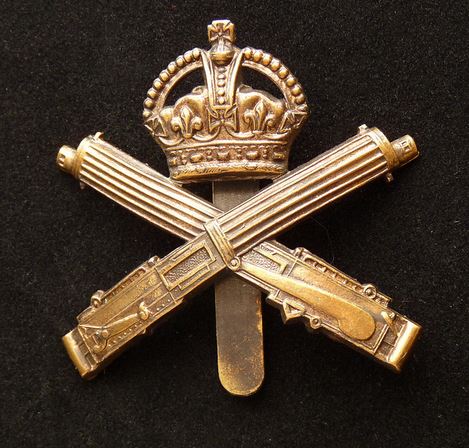Personal Details
Born: 9 May 1893 in Whitchurch, Shropshire and baptised on 25 June 1893 at the Wesleyan Methodist Chapel, Whitchurch.
Family: He was one of five children born to John Briggs, a boot maker, and his wife Sarah Grace (nee Carter). Two of his siblings died in infancy. George married Nellie Lowe in the first quarter of 1921 in Whitchurch Shropshire. Together the couple had three children, John Lowe born 1922, Marie Lowe born 1923 and Joan born 1927.
Residence: In 1901 George was living with his parents at 19 High Street, Whitchurch, but by 1911 he was a boarder at Bromhall Bank, Hampton, Malpas, Cheshire. The address given for him on the Absent Voters List for 1919 was 54 High Street, Whitchurch. By 1939 he and his wife and family were living at Wood Cottage, Wirswall, near Whitchurch. At the time of his death his home was Wood Farm, Wirswall.
Education: From 18 September 1906 until 8 April 1909 George attended Whitchurch Grammar School.
Employment: His occupation at the time of the 1911 Census was given as “learning farming “. He continued as a farmer after WW1 until the time of his death in 1973.
Died: 12 March 1973 in Whitchurch, Shropshire.
Military Details
Regiment: Machine Gun Corps (previously Shropshire Yeomanry)
Rank: Sergeant
Service Number: 56703 (previously 1945)
Date of Enlistment: 25 August 1914
Date of Discharge: 24 July 1919
Reason for Discharge: Not Known
Other Information:
George was awarded the Campaign Medals (British War Medal, and Victory Medal) and the Silver War Badge (Issued 17 January 1921).

The British War Medal (also known as 'Squeak') was a silver or bronze medal awarded to officers and men of the British and Imperial Forces who either entered a theatre of war or entered service overseas between 5th August 1914 and 11th November 1918 inclusive. This was later extended to services in Russia, Siberia and some other areas in 1919 and 1920. Approximately 6.5 million British War Medals were issued. Approximately 6.4 million of these were the silver versions of this medal. Around 110,000 of a bronze version were issued mainly to Chinese, Maltese and Indian Labour Corps. The front (obv or obverse) of the medal depicts the head of George V. The recipient's service number, rank, name and unit was impressed on the rim.
The Allied Victory Medal (also known as 'Wilfred') was issued by each of the allies. It was decided that each of the allies should each issue their own bronze victory medal with a similar design, similar equivalent wording and identical ribbon. The British medal was designed by W. McMillan. The front depicts a winged classical figure representing victory. Approximately 5.7 million victory medals were issued. Interestingly, eligibility for this medal was more restrictive and not everyone who received the British War Medal ('Squeak') also received the Victory Medal ('Wilfred'). However, in general, all recipients of 'Wilfred' also received 'Squeak' and all recipients of The 1914 Star or The 1914/1915 Star (also known as 'Pip') also received both 'Squeak' and 'Wilfred'. The recipient's service number, rank, name and unit was impressed on the rim.

The Silver War Badge was issued in the United Kingdom and the British Empire to service personnel who had been honourably discharged due to wounds or sickness from military service in World War I. The badge, sometimes known as the "Discharge Badge", the "Wound Badge" or "Services Rendered Badge", was first issued in September 1916, along with an official certificate of entitlement.


My grandfather David Tudor Jones and his brother Edward Goronwy Jones both signed up on the same day as George, their numbers were 1946 and 1948 so both were just behind him in the Q. My grandfather also went on to serve in the Machine Gun Corps . I have a lot of info re Shropshire Yeomanry & MGC.
Sorry for such a long delay in replying. Many thanks for this interesting piece of information. Whereabouts were your grandfather and great uncle living, presumably they all signed up at the same place?
Once we get all our served and survived soldiers posted it will be interesting to look at those Whitchurch soldiers that served in the Shropshire yeomanry as a separate project and look into the history of Whitchurch Drill Hall.
George Briggs was my grandfather (his daughter Marie Lowe Briggs was my mother). He served in Palestine during the Great War and was wounded. Wood Farm, Wirswall is still in my family although I live in Inverness myself. If there is any more information about him or his regiment I would appreciate it. Thanks.
Hi Jonathan
All the volunteers have been working from home during lockdown and somehow your comments have been overlooked – please accept my apologies.
Do you still want the information ?
I’m in the museum next week so can access the documents/files
Best wishes
Judith
George Briggs was my grandfather (Marie Lowe Briggs was my mother). He served in Palestine and was injured in the Great War. I would love to receive any more information about him or his regiment. Thanks.
George Briggs was my grandfather. He fought in Palestine and was injured in the Great War.
Dear Judith, many thanks for replying to me. Time is unimportant. Yes, if there’s any relevant information on what my gramdfather did in the War I would be very grateful to receive it. Thanks.
Jonathan
Information sent to your personal email